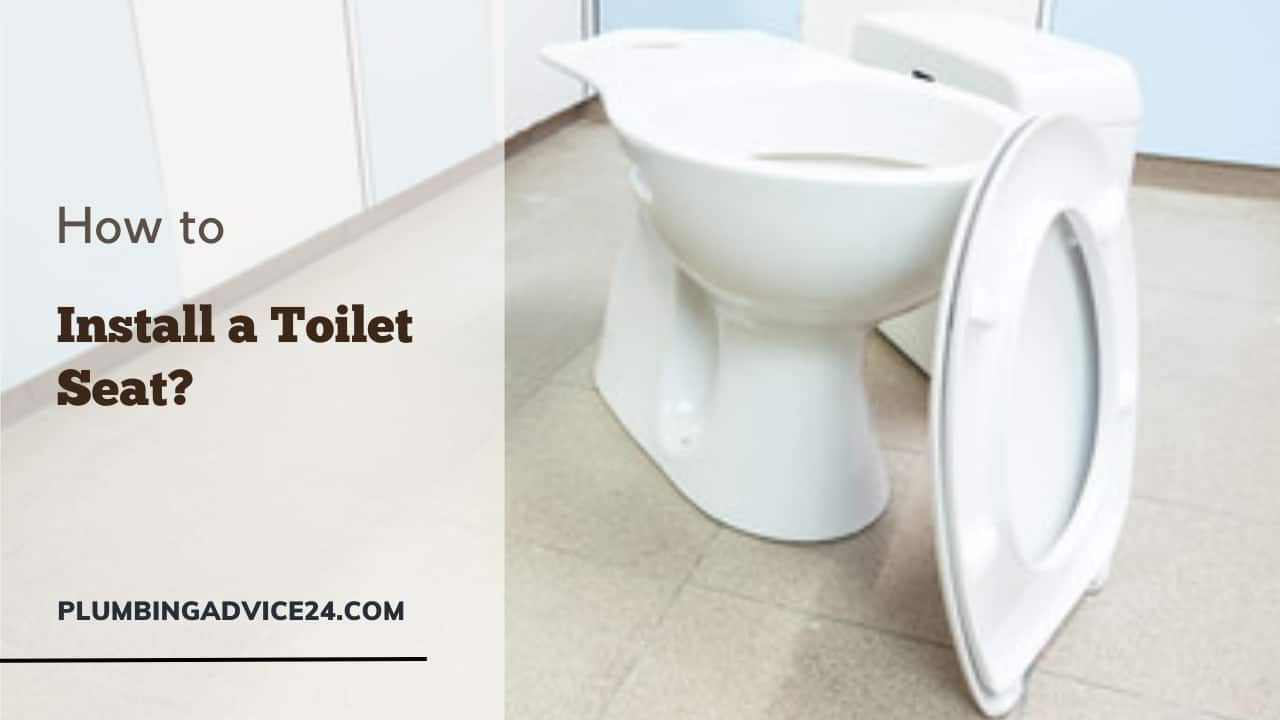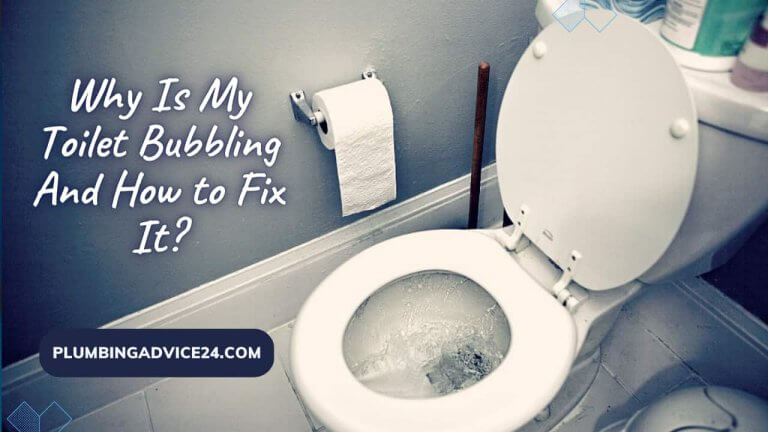How to Install a Toilet Seat?
The process of installing a toilet seat is straightforward. You just need a handful of commonplace implements and a simple manual. We’ll guide you step-by-step through how to install a toilet seat until you feel comfortable doing it on your own.
When Should You Install a Toilet Seat?
One of the most apparent reasons to install a new toilet seat is if the old one is broken. Also, if your toilet is wobbly, it might be time to replace it. However, you can change your ideal seat if you prefer a different appearance.
Some recently built toilets have water closets without seats, which is unusual. In this case, knowing how to change a toilet seat is also a good idea.
How to Install a New Toilet Seat?
When toilet seats become old or damaged they need to be removed and replaced from time to time. However, the lifespan of your toilet is at least 15 years. Whereas on average, the lifespan of a toilet seat is 5 to 10 years. The difference in lifespan between your toilet and seat indicates that at some point you will need to replace the toilet seat with a new seat.
Even if the toilet seat is still in good condition, replacing the toilet seat is a relatively easy and inexpensive way to freshen up a bathroom. It is important to note that you are choosing the correct size of the toilet seat you are choosing. Here are the steps to follow for new toilet seat installation:
Step 1: Measure the Toilet Seat.
Toilets come in three different shapes—round, elongated, and compact elongated. You will need to measure the bowl to make sure what shape toilet seat you buy. Start by measuring the distance between the two bolts on the back of the seat. The standard width is 5-1/2 inches, but it can vary with the particular toilet.
Next, measure the width of the seat at its widest point. Finally, measure the length of the seat at its longest point (from the center point between the two bolts to the outermost lip).
Standard toilets are either 16-1/2 inches long or 18-1/2 inches long. 16-1/2 inch toilets will be round, while 18-1/2 inch toilets will be elongated and have an oval shape. A compact elongated toilet is somewhere between round and oval in shape. Once you have measured the toilet bowl, you can shop for the right size seat.
Step 2: Choose a New Toilet Seat.
If you visit a store nearby, you may choose your new toilet seat from a selection of options. Depending on your requirements, you may buy this product in either a round or a rectangular shape. Buy a seat with unusual cushioning that makes no noise if you want to try something new.
Whatever your financial situation, you should be able to find a good spot in the store. Most of them are affordable—the majority cost less than $20. But you can accomplish more if you have a lot of extra cash.
Before looking up instructions on changing the cover, choose a new toilet seat with colors that go well with the one you already have. White is a good choice if you don’t know what to choose but want to seem put together. Replace the standard white toilet seat with a blue or wooden one to make a statement.
Step 3: Gather the Required Tools.
As was previously said, just a few basic tools are needed to replace an old seat. This purchase includes a flexible wrench, a flat-head screwdriver, and spray oil. A small knife and other tools make the pack easier to use. Go to a hardware store if you still need them.
Step 4: Remove the Old Toilet Seat.
The bolt caps must be moved before being removed. Examine the back of your seat, paying close attention to the area around the gas tank. The bowl’s sides are coated in plastic for protection.
To remove a cap, insert the screwdriver underneath it and pull it up. If your bowl doesn’t have lids, you may use bolts instead.
To remove the bolts, take out your adjustable wrench and turn it backward. These hold the nuts in place, occasionally found under the bowl’s rim. Use a tool to loosen the nuts on the bolts counterclockwise.
You may now remove the bowl by removing the top cover bolts. At this point, a screwdriver is necessary, especially if the screws have slotted heads. If not, try spinning the nuts (and any washers) until they come free. The actions must be carried out the other way around the clock in both situations.
On older toilets, the nuts might appear to be stuck. You’re in luck since you can still remove them if rust or dirt is the only thing holding them in place. WD-40 the screws and take them out after ten minutes.
Were you still acting like an idiot? Securing the nut with the wrench will allow you to spin it with the screwdriver. Use the knife on the nuts if they wouldn’t move. Holding the blade above the nut, cut through it.
Bolts on toilets should be removed when they are no longer reliable. Now the seat may be unhinged from the hinges. After that, throw away everything that has run out of time.
Step 5: Attach the New Toilet Seat.
Before installation, the seat must be taken out of its packaging. The hinges on this section should match those on the preceding portion. The essential nuts, bolts, and plastic covers are also included in the kit.
Insert the bolts through the holes in the toilet bowl from underneath. If there are rubber or plastic washers, make sure to place them between the bowl and the bolts to provide stability and prevent leaks.
Step 6: Tighten the Bolts’ Nuts.
Look for any nuts sticking out from the top of the bowl at one of the ends. One of these bolts should then have a nut and a counterclockwise screw inserted. You may start tightening it with your hands, then use the wrench to complete it.
Repeat the directions from the other side of the bowl for the bolt. Install any nuts with your new seat before screwing in the bolts. Now that you’ve finished, you may attach the nuts’ plastic covers (if they go with them).
Step 7: Test the Seat.
Learning how to replace the seat on your toilet can save you from having to thread any bolts through any springs. For certain varieties, this is especially true. Before the nut is tightened on these toilets, a bolt must be inserted into a hole so the seat springs can move freely over the bolts. Give the seat a gentle shake to make sure it’s firmly in place and doesn’t move around.
Read the instructions with the new seat, even if you already know how to remove the old one from its hinges.
Replacement Toilet Seat Safety Advice:
Toilets are prime locations for the growth of pathogenic bacteria because of their constant contact with waste. Follow these guidelines before beginning to work on one.
Do not use your bare hands to adjust the seat position. Instead, try on some rubber gloves. These things may be purchased at a nearby shop at reasonable costs.
Remove the present seat from the bowl and clean it before putting it back in. Then, before installing the new one, thoroughly scrub the bowl. Use an antibacterial cleanser for thorough washing.
Conclusion:-
Here we have provided the best way to install a new toilet seat. We hope this helps you a lot when you install a new one. Installing a toilet seat is easy, with just a few commonplace implements and a simple manual. It is important to replace the old one if it is broken or if the toilet is wobbly. Additionally, some recently built toilets have water closets without seats, so knowing how to change a toilet seat is beneficial.
Do All Toilet Seats Fit All Toilets?
No, not all toilet seats can fit all toilets. Although there are standard sizes and shapes for toilet seats, different toilet models and brands may vary in design and dimensions. Factors such as the shape of the toilet bowl, the distance between the mounting holes, and the type of hinges need to be considered when buying a new toilet seat.
Is It Easy to Replace a Toilet Seat?
Yes, replacing a toilet seat is generally a straightforward and relatively easy task that can be done without professional assistance.
Are All Toilet Seat Hinges the Same?
No, not all toilet seat hinges are the same. Different toilet seat models and brands may vary in hinge design, size, and attachment method.
Which Toilet Shape Is Most Comfortable?
The comfort level of a toilet depends on personal preferences, body size, and individual comfort needs. However, an elongated toilet bowl is generally considered more comfortable than a round toilet bowl for most people.
How to Attach Toilet Seat?
Before installation, the seat must be removed from its packaging. The hinges on this section should match the previous section. The kit also includes the necessary nuts, bolts, and plastic covers. Insert the bolts through the holes in the toilet bowl from below. If there is a rubber or plastic washer, be sure to place it between the bowl and the bolt to provide stability and prevent leaks.














